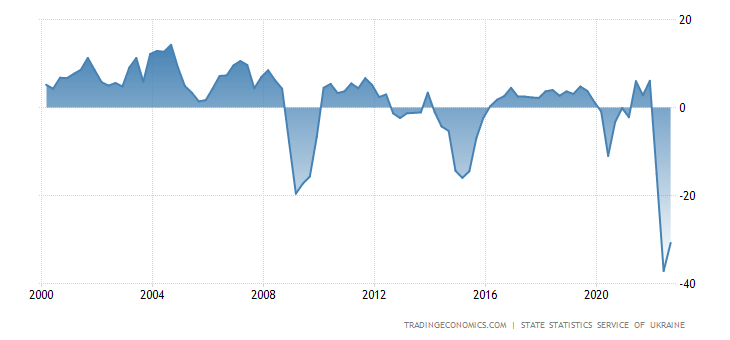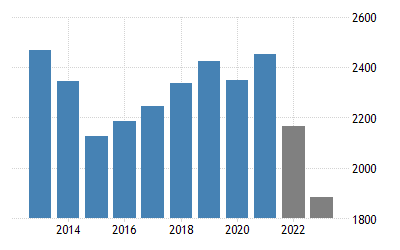Russia's war against Ukraine as contributed to a deep humanitarian crisis and huge problems for the economy of Ukraine. While the poverty rate is rising due to the Russian invasion, the government is in desperate need for more budget revenues to replace everything destroyed in the war. Regardless the efficacy of the government in tackling economic issues - a pre-war problem, writes the Ukrainian political consultant Kateryna Odarchenko - the plan to repair all the harm done to the economy and the incomes of Ukrainian workers must move ahead without delays.

Picture Rawpixel
By Kateryna Odarchenko
The extensive shelling of critical infrastructure and residential buildings has contributed to a deep humanitarian crisis in Ukraine. Even before the war started Ukraine was facing some economic instability. The layering of Russian aggression on top of weak foundations caused not only a huge increase in internally displaced people and refugees but also huge budget losses, which by end of 2022 total more than 135.9 billion USD, according to a report by the Kyiv School of Economics' analytical team. As a result, Ukrainian households have faced daunting economic losses. A comparison with the relatively well-off period before the war helps reveal the magnitude of those losses.
Year-over-Year Comparisons
According to the State Statistics Committee of Ukraine, in the third quarter of 2021, before the war started, the nominal income of the population amounted to 4,364 billion USD, or 118.7 percent of the amount for the same period in 2020. Cash income, which is used to purchase goods and services, increased by 18 percent on a year-over-year basis, and real income, determined by taking into account the purchasing power factor, increased by 6.8 percent.
Wages also showed an increase on a year-over-year basis. The proportion of wages in household income in the third quarter of 2021 amounted to 45.8 percent, compared to 45.4 percent in the corresponding period of 2020. The average monthly wage for full-time employees in 2021 was 1,055 USD, an increase of 20.9 percent over 2020. The lowest level of average monthly wages by type of economic activity during this period was for workers engaged in postal and courier activities—293.36 USD (which was 58.6 percent of the average wage level), and the highest was earned by workers in the airline industry, 1,018.07 USD (203.4 percent of the average wage level).
In industry, the average monthly wage in 2021 compared to 2020 increased by 16.8 percent and amounted to 532.21 USD.
In addition, according to the Pension Fund of Ukraine, the average size of the pension, together with targeted cash assistance with indexation, as of January 1, 2022, was 142.55 USD, which was 13.8 percent higher than the average pension as of January 1, 2021. However, prices in the consumer market increased by 1.3 percent in January 2022 compared to the previous month and were 10 percent higher than in January 2021. Average monthly aggregate expenditures per household in the first half of 2021 amounted to 384.75 USD.
Regarding relative poverty rates for the first half of 2021, the poverty rate based on the expenditure criterion (75 percent of median total expenditures) increased by 2.9 percentage points, to 25.0 percent, while the poverty rate calculated using the EU equivalent scale (60 percent of median total income) increased by 2.2 percentage points, to 13.6 percent.
Deteriorating Economic Picture
Compounding the difficulties related to price increases and the other factors mentioned above, Ukraine’s economy was already contracting and exhibiting signs of crisis before the onset of the war. Russia’s war preparations and the massing of Russian troops on the border caused considerable belt tightening, which occurred in the context of global high inflation and worldwide worries over a recession. All these factors had a strong influence of family and personal welfare.
According to a survey conducted in January 2022, a plurality of respondents (52.8 percent) said their family's financial situation had deteriorated over the past year. Just over a third (38.5 percent) responded that it had not changed, and 7.8 percent believed it had improved. Relatedly, most respondents thought that the president and the government were unable to find effective solutions to address economic problems, a third of respondents (32.6 percent) believed that the president and the government were partially effective in solving economic problems, and only 8.4 percent of respondents believed that the president and the government were effective in addressing economic problems.
(It bears noting that, with respect to the attitude toward authorities that emerged in the survey, distrust of the government is typical of Ukraine. Even the most popular political teams have historically experienced a period of distrust and falling ratings, and distrust of the parliament of Ukraine, the Verkhovna Rada, and the courts is a persistent phenomenon.)

Source: Tradingeconomics.com
The main reasons for the economic problems of Ukraine most often cited by the January survey respondents were the authorities’ incompetence (cited by 37.2 percent) and high levels of corruption (34.3 percent). Additionally, 11.8 percent of the respondents considered the war in the East of Ukraine to be the main cause of the country’s economic problems, and 5.9 percent considered the pandemic coronavirus to be the main cause.
The situation has worsened considerably since the January survey. In the first few weeks of the war, according to Prime Minister Denys Schmyhal, Ukraine lost 35 percent of its GDP, taking into account infrastructure losses, increased spending on the military and social welfare programs, and enterprises’ losses.
Refugees’ economic situation
As of November 29, there were 15.9 million Ukrainian refugees living abroad. In a July–August 2022 survey by the Razumkov Center, the main source of refugees’ income, mentioned by 28 percent of respondents, was material assistance from various sources. Refugees in Germany selected that answer noticeably more often (48 percent) than did refugees in other countries. Another 19 percent of respondents selected tentative savings, 12 percent selected a permanent job in the host country, 12 percent identified temporary or part-time work in the host country, 0.6 percent identified income from conducting a business in the host country, and 0.2 percent received a student scholarship in the host country as the main source of income.
For those receiving funds from Ukraine as the main source of income, 9 percent identified remote distance work, 0.8 percent selected income from business operations in Ukraine, and 2 percent were receiving a pension from Ukraine.
When refugees and internally displaced persons are included, more than 70 percent of Ukraine’s population (those who remained in country between February and July 2022) have lost income, according to the results of the fifth wave of a survey commissioned by the European Commission and conducted by the Ukrainian research company Gradus Research in partnership with the Center for Economic Recovery. Some 73 percent of Ukrainians reported a decrease in their income compared to before the war. Another 16 percent of those surveyed said that their income had not changed, with only 3 percent reporting an increase. The greatest proportion of citizens who reported a decrease in income was recorded among internally displaced persons (83 percent of IDPs) and the least among those who went abroad (61 percent).

Source: Tradingeconomics.com
International Aid and Recovery Plans
With Ukraine’s stunning drop in GDP owing to the war, the only way to defeat Russia remains international aid, which will also be needed to help rebuild Ukraine after the war. The situation is not straightforward, so the need for budget support during and after the war becomes an important discussion point. The reconstruction plan should include incentives for the return of highly qualified specialists to Ukraine, the creation of new jobs, and a system of incentives to invest in processing and high-tech enterprises.
A number of recovery plans has been submitted so far. According to the governmental "Reconstruction of Ukraine" program, the country’s financing needs are estimated at $750 billion, which the plan separates into two phases. The first phase is scheduled for the years 2023–2025 and the second phase for 2026–2032. Overall, the ten-year rehabilitation plan envisages an annual GDP growth of more than 7 percent and Ukraine entering the top 25 countries on the Human Capital Index, which “quantifies the contribution of health and education to the productivity of the next generation of workers,” and the Economic Complexity Index, a measure of economic capacity. The plan document will be finalized after the end of the war. A key source of recovery funding should be the confiscated assets of Russia and Russian oligarchs. Other sources of funding are expected to include international grants and preferential loans from international financial institutions, private sector investments, and extrabudgetary contributions from individuals and corporations.
In conclusion, while Ukraine’s economy faced ample difficulties before Russia’s full-scale invasion, the effects of the invasion have amplified old problems and brought new ones: a rising poverty rate, displaced populations, price hikes, and the need for more budget revenues to replace everything destroyed in the war. Regardless of people’s assumptions about the efficacy of the president and the government in tackling economic issues, the plan to repair all the harm done to the economy and the incomes of Ukrainian workers must move ahead without delays.
Kateryna Odarchenko is a political consultant, a partner of the SIC Group Ukraine, and a member of the International Association of Political Consultants (IAPC). She is also president of the PolitA Institute for Democracy and Development.
This essay was originally written for and published by the Wilson Center.
